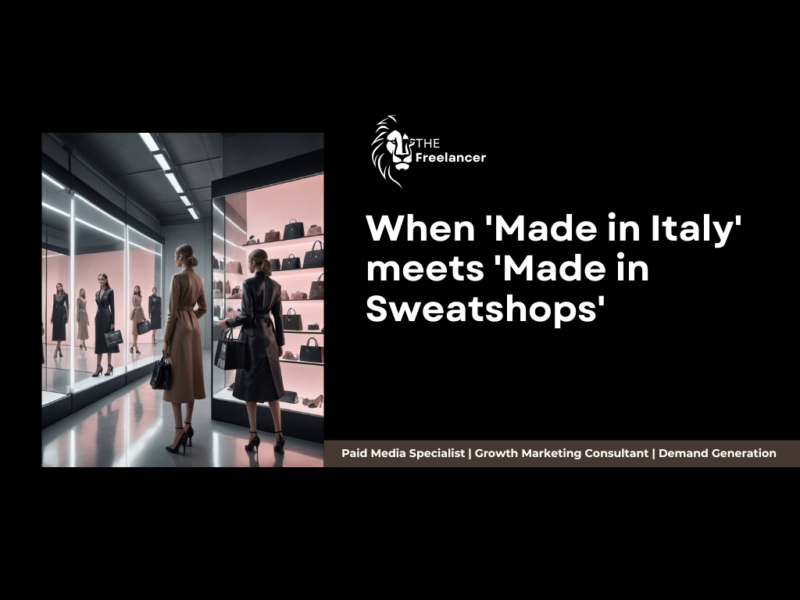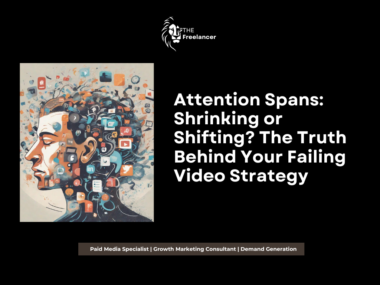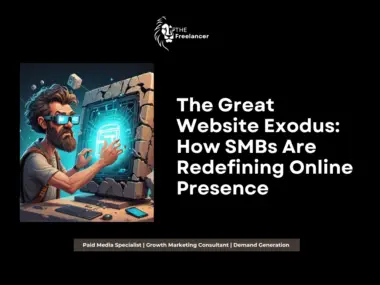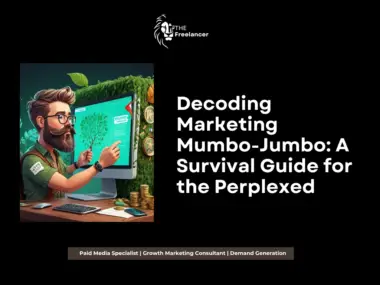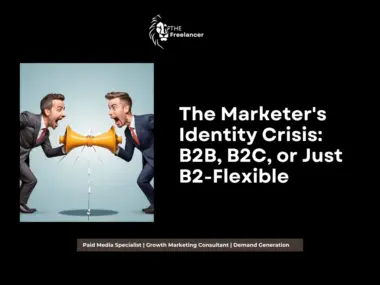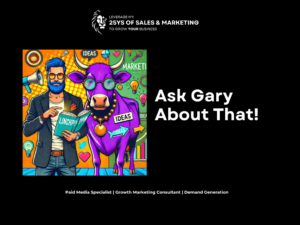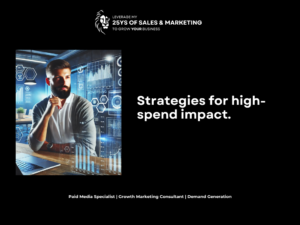On June 29, 2024, the Financial Times dropped a bombshell that sent shockwaves through the luxury fashion industry. Dior, a name synonymous with elegance and opulence, found itself embroiled in a scandal that would make even the most jaded fashionista’s jaw drop. The article revealed a sordid tale of exploitative labor practices in Dior’s leather bag supply chain, complete with illegal workers, unsafe conditions, and profit margins that would make a Wall Street banker blush.
As we digest this news, we’re left grappling with a multitude of questions. How could a brand as prestigious as Dior allow this to happen? Are luxury brands too big to fail, or are they simply too luxurious to care? And perhaps most importantly, what does this say about us, the consumers who continue to covet these products despite knowing the potential ethical implications?
In this deep dive, we’ll explore the complex web of responsibility, examine the psychology behind our purchasing decisions, and ponder whether there’s hope for a more ethical future in the world of high-end fashion. Grab your favorite (ethically sourced) beverage, and let’s unravel this designer dilemma together.
The Dior Debacle: A Case Study in Supply Chain Shenanigans
Let’s start by breaking down the Dior disaster. According to the Financial Times report, Dior’s leather bag supplier in Milan was caught with its metaphorical pants down, employing illegal workers in conditions that would make a Victorian workhouse look like a spa retreat. These workers were crafting bags that Dior would buy for a mere €53, only to slap on a price tag north of €2,000. Talk about markup!
This revelation led to the court administration of Dior’s Italian subsidiary, citing insufficient oversight. It’s like leaving a fox in charge of the henhouse, only to act surprised when all the chickens mysteriously disappear.
But Dior isn’t alone in this haute couture walk of shame. Other luxury brands like Alviero Martini and Giorgio Armani have faced similar scrutiny. It seems the problem is as widespread as the desire for designer labels.
The “Too Big to Fail” Fallacy
Now, let’s address the elephant in the room (or should I say, the oversized designer tote in the closet?): Are these luxury brands too big to fail?
The concept of “too big to fail” originated in the financial sector, referring to institutions so large and interconnected that their failure would have catastrophic ripple effects throughout the economy. But can we apply this same logic to fashion brands?
On one hand, luxury brands like Dior, Louis Vuitton, and Gucci have built empires that extend far beyond just clothing and accessories. They’re cultural institutions, employers of thousands, and significant contributors to national economies. The failure of such a brand could indeed have far-reaching consequences.
However, the fashion industry is notoriously fickle. Today’s must-have brand can be tomorrow’s clearance rack filler. Remember Von Dutch trucker hats? Exactly.
What luxury brands do have is a certain resilience built on years of cultivating desire and exclusivity. They’ve created an aura of aspiration that seems to weather scandals with surprising ease. It’s not that they’re too big to fail, but rather that they’ve conditioned us to forgive their transgressions in exchange for that coveted logo.
The Psychology of Luxury Consumption: Why We Can’t Quit
So, why do we continue to lust after these brands, even when we know there might be ethical issues lurking behind the glossy facade? The answer lies in the complex psychology of luxury consumption.
1. Status Signalling: Luxury goods serve as a way to signal status and belonging to a particular social group. That Dior bag isn’t just a bag; it’s a billboard announcing your arrival in the upper echelons of society (or at least your aspiration to be there).
2. Self-Reward: Purchasing luxury items can be a form of self-reward, a tangible representation of our success or hard work. It’s the adult equivalent of a gold star sticker, only much more expensive.
3. Quality Perception: There’s a persistent belief that luxury equals quality. Even if we know intellectually that a €2,000 bag doesn’t cost anywhere near that much to produce, we convince ourselves that we’re investing in superior craftsmanship.
4. Emotional Connection: Brands work hard to create emotional connections with consumers. We’re not just buying a product; we’re buying into a lifestyle, a story, a dream.
5. Cognitive Dissonance: When faced with information that conflicts with our desires (like news of unethical practices), we often engage in mental gymnastics to justify our choices. “Well, all companies probably do this to some extent,” we might tell ourselves.
6. Distance from the Problem: The realities of exploitative labor practices feel distant and abstract, especially when contrasted with the immediate gratification of a luxury purchase.
Understanding these psychological factors doesn’t excuse unethical consumption, but it does help explain why changing behaviour is so challenging.
The Blame Game: Who’s Really Responsible?
When scandals like the Dior debacle emerge, it’s tempting to play the blame game. But responsibility rarely falls on a single party. Let’s break down the key players:
1. The Brands:
Luxury brands like Dior bear significant responsibility. They set the tone for their supply chains and have the power to demand ethical practices from their suppliers. Their pursuit of profit margins shouldn’t come at the cost of human dignity.
However, it’s worth noting that supply chains, especially in fashion, are incredibly complex. A single product might involve dozens of suppliers and sub-suppliers. While this doesn’t absolve brands of responsibility, it does highlight the challenge of maintaining oversight.
2. The Suppliers:
The immediate culprits in many of these scandals are the suppliers who directly engage in exploitative practices. They’re the ones creating unsafe working conditions and employing illegal labor. Their actions are often driven by pressure to meet demanding deadlines and price points set by the brands.
3. The Marketing Companies:
Marketing agencies that work with these brands aren’t off the hook either. By crafting campaigns that glorify luxury products without questioning their origins, they’re complicit in perpetuating a system that values image over ethics.
4. The Consumers:
As much as we might want to point fingers elsewhere, we, the consumers, play a crucial role in this ecosystem. Our demand for luxury goods, often at unsustainable price points, fuels the pressure for cost-cutting measures in the supply chain.
5. Regulatory Bodies:
Government agencies and industry regulators also share blame for failing to implement and enforce stringent oversight measures.
The reality is that responsibility is distributed across this entire network. Meaningful change will require action from all parties involved.
Turning the Tide: Can We Create a More Ethical Luxury Industry?
Now for the million-dollar (or should I say, €2,000) question: Can we turn this around? Is there hope for a more ethical luxury industry? The answer is a cautious yes, but it won’t be easy. Here are some potential avenues for change:
1. Transparency and Traceability:
Brands need to embrace radical transparency. This means providing detailed information about their supply chains, from raw materials to final product. Blockchain technology could play a crucial role here, allowing for the tracking of products from origin to consumer.
2. Ethical Certifications:
Independent certification bodies could help verify ethical practices throughout the supply chain. Think of it as a “Fair Trade” label, but for luxury goods.
3. Consumer Education:
We need to shift consumer mindsets from “luxury at any cost” to “ethical luxury.” This involves educating consumers about the real costs of their purchases and empowering them to make informed decisions.
4. Regulatory Action:
Governments need to step up with stricter regulations and enforcement. This could include mandatory supply chain audits and hefty penalties for brands found to be complicit in unethical practices.
5. Redefining Luxury:
Perhaps it’s time to redefine what luxury means. Instead of equating luxury with exclusivity and high prices, we could shift towards valuing craftsmanship, sustainability, and ethical production.
6. Empowering Workers:
Initiatives that give workers more voice and power in the supply chain could help prevent exploitation. This could include supporting unionization efforts and implementing anonymous reporting systems for labor violations.
7. Sustainable Materials and Practices:
Encouraging the use of sustainable, ethically sourced materials and promoting circular economy practices could help reduce the environmental and social impact of luxury production.
8. Collaborative Industry Efforts:
The luxury industry could come together to establish shared standards and best practices for ethical production. Competition shouldn’t come at the cost of human rights.
The Role of Social Media and Influencer Culture
We can’t discuss brand reputation and consumer behavior without addressing the elephant in the room (or should I say, the influencer in the Instagram post?): social media.
Social media platforms have become the new runways, with influencers serving as the models and brand ambassadors. This has both complicated and amplified the issues we’re discussing.
On one hand, social media has made it easier than ever for brands to create desire and drive consumption. A single post from a popular influencer can generate millions in sales. This constant parade of luxury goods on our screens fuels the “need” for these products, often drowning out concerns about ethics or sustainability.
On the other hand, social media has also become a powerful tool for activism and awareness. Scandals like the Dior debacle can spread like wildfire, potentially causing significant damage to a brand’s reputation in a matter of hours.
The challenge lies in harnessing the power of social media for positive change. This could involve:
1. Ethical Influencers: Promoting influencers who prioritise ethical and sustainable fashion.
2. Transparency Challenges: Encouraging brands to participate in “transparency challenges” where they share detailed information about their supply chains.
3. Consumer-Led Campaigns: Empowering consumers to use social media to demand change from their favourite brands.
4. Education Through Entertainment: Creating engaging content that educates consumers about the realities of the fashion supply chain.
The Future of Luxury: A New Definition of Prestige
As we look to the future, perhaps it’s time to reimagine what luxury means. In a world grappling with climate change, inequality, and resource scarcity, can we shift our definition of prestige?
Imagine a luxury industry where the most coveted items are those with the most ethical and sustainable credentials. Where craftsmanship is valued not just for its aesthetic quality, but for the fair treatment of the artisans involved. Where exclusivity comes not from high prices, but from limited production runs that ensure sustainable resource use.
This isn’t just a pipe dream. We’re already seeing hints of this shift:
1. Resale and Vintage: The growing popularity of luxury resale platforms suggests a move towards more sustainable consumption patterns.
2. Rental Models: Luxury rental services are allowing consumers to access high-end fashion without the need for ownership, potentially reducing overall consumption.
3. Sustainable Luxury Brands: New brands are emerging that place ethics and sustainability at the core of their business models, challenging traditional luxury houses to keep up.
4. Customisation and Made-to-Order: Some brands are moving towards made-to-order models, reducing waste and potentially allowing for more ethical production practices.
5. Technology-Driven Transparency: Advances in technology are making it easier for brands to track and verify their supply chains, and for consumers to access this information.
Conclusion: The Power of the Purse (Designer or Otherwise)
As we wrap up our exploration of brand reputation, ethical responsibility, and the future of luxury, one thing becomes clear: change is possible, but it requires effort from all parties involved.
Brands need to prioritise ethics and transparency, even if it means sacrificing some of their profit margins. Suppliers must be held accountable for their labor practices. Marketing companies should consider the ethical implications of the messages they’re promoting. Regulatory bodies need to step up their oversight and enforcement.
But perhaps most importantly, we as consumers need to recognize the power we hold. Every purchase is a vote for the kind of world we want to live in. By demanding transparency, supporting ethical brands, and being willing to pay a fair price for truly sustainable luxury, we can drive change in the industry.
The Dior scandal, while shocking, presents an opportunity. It’s a wake-up call that even the most prestigious brands aren’t immune to ethical failings. But it’s also a chance to reimagine what luxury could be in a more conscious, sustainable world.
So the next time you’re eyeing that designer bag, ask yourself: What am I really buying into? Is this purchase aligned with my values? And what kind of luxury industry do I want to support?
Remember, true luxury isn’t just about owning expensive things. It’s about making choices that you can feel good about, that contribute positively to the world around you. And that, dear reader, is the most stylish choice of all.
